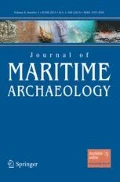Abstract
People visit historic sites, museum exhibits, and commemorative objects and places because they are tangible representations of historic events. Individuals, internally defined groups, and communities of all sizes form culturally meaningful connections to these sites through the process of ‘‘monument building’’—the creation of concrete and abstract, tangible and intangible creative, artistic works. These artistic works in turn purposefully function to perpetuate the memory and ascribed meaning of a site, and the events that took place there and/or the people with whom they associate it. They also function to fix particular interpretations of the site—whether an associated event was good or bad, moral or amoral, ethical or unethical—particular truths, based in evidence or not, that are important to the artist or commissioners of the work. That this can be contentious is evident, and this contentiousness can be amplified when the sites in question are those associated with traumatic events such as military battles and shipwrecks.








Image courtesy of the NOAA Office of Ocean Exploration and Research
Similar content being viewed by others
Notes
For many examples, see the compilation website http://dearphotograph.com (accessed May 2, 2019).
References
Bigney MF (1867) The wreck of the nautilus. The forest pilgrims, and other poems. M. Doolady, New York
Blades BS (2003) European military sites as ideological landscapes. Hist Archaeol 37(3):46–54
Delgado JP, Kirby T, Price S, Cremer MD, Van Tilburg H, Varmer O, Matthews R (2016) The lost submarines of pearl harbor: the rediscovery and archaeology of Japan’s top-secret midget submarines of world war II. Texas A&M University Press, College Station
Lees WB, Gaske FP (2014) Recalling deeds immortal: Florida monuments to the civil war. University Press of Florida, Gainesville
Philbrick N (2000) In the heart of the sea: the tragedy of the whaleship Essex. The Viking Press, New York
Ross S, Brooke S, Baird E, Coykendall K, Davies A, Demopoulos A, France S, Kellogg C, Mather R, Mienis F, Morrison C, Prouty N, Roark B, Robertson C (2017) Exploration and research of mid-atlantic deepwater hard bottom habitats and shipwrecks with emphasis on canyons and coral communities: Atlantic deepwater canyons study. U.S. Dept. of the Interior, Bureau of Ocean Energy Management, Atlantic OCS Region. OCS Study BOEM 2017-060. 1000 p + apps
Savigny JBH, Corréard A (1818) Narrative of a Voyage to Senegal in 1816 undertaken by order of the French Government, comprising an account of the shipwreck of the Medusa, the sufferings of the crew, and the various occurrences on board the raft, in the Desert of Zaara, at St. Louis, and at the Camp of Daccard. To which are subjoined observations respecting the agriculture of the Western Coast of Africa, from Cape Blanco to the mouth of the Gambia. Cockburn, London
Shackel PA (2003) Thematic issue: remembering landscapes of conflict. Hist Archaeol 37(3):1–148
Stewart D (2011) The sea their graves: an archaeology of death and remembrance in maritime culture. University Press of Florida, Gainsville
Author information
Authors and Affiliations
Ethics declarations
Conflict of interest
The author declares that she has no conflict of interest.
Additional information
Publisher's Note
Springer Nature remains neutral with regard to jurisdictional claims in published maps and institutional affiliations.
Rights and permissions
About this article
Cite this article
Caporaso, A. Art, Monument, and Memory: An Introduction. J Mari Arch 15, 251–260 (2020). https://doi.org/10.1007/s11457-020-09269-7
Published:
Issue Date:
DOI: https://doi.org/10.1007/s11457-020-09269-7




